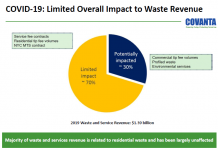Debra Fiakas
After a series of bankruptcies laid the U.S. ethanol industry on its back a few years ago, the survivors got the message – become economically viable or go out of business. The industry has been scrambling to adopt new processes that utilize other non-food materials or at least get more out of the corn that has been the mainstay feedstock for the U.S. ethanol industry.
Enter Greenshift Corporation (GERS: OTC/BB) with its corn oil extraction process and a new step in the corn-ethanol production process. Greenshift may change the economics of corn-ethanol production by giving producers new revenue streams.
In the U.S. corn-ethanol industry the dry mill process is most typical with the whole corn kernel going into the fermentation stage. After the fermentation process that turns the sugars in the corn kernel to ethanol, the leftovers or “corn stillage” are usually put through water extraction and drying stages. The dried by-product called distillers grain is sold as animal feed. Cattle or hog finishers are only to happy to get distillers grains since the protein content is near 30%.
However, distillers grains also has a high fat content – 12% to 15%. Greenshift’s corn oil extraction process removes corn oil from the corn stillage, providing ethanol producers another revenue producing by-product. The corn oil can then be sold as biofuel feedstock or as an alternative animal feed ingredient. What is left in the stillage goes on through the usual water extraction and drying process. Greenshift claims its process removes as much as 80% of the oil from the corn stillage.
Greenshift has managed to license its process to a half dozen or so ethanol and corn handling concerns, including most recently Marquis Energy for its Wisconsin ethanol plant. Marquis previously licensed the Greenshift technology for its plant in Illinois. Green Plains Renewable Energy, Inc. (GPRE: Nasdaq) is also a licensee. In a recent letter to shareholders, Greenshift CEO Kevin Kreisler predicted that current license agreements would be sufficient to bring the company to break-even at the operating level.
As rosy as the story might sound, GERS is only for the most risk tolerant investor. The stock is trades more than 70 million shares per day at a price that is well under a half penny. Those of us who need to sleep at night might wait until Green Plains has implemented the Greenshift technology. Green Plains expects to complete deployment by the end of March 2011 and claims the change could enhance operating income by $15 million to $19 million per year. If Green Plains is able to make good on its claims, it could be a good reason to look more carefully at GERS.
Debra Fiakas is the Managing Director of Crystal Equity Research, an alternative research resource on small capitalization companies in selected industries.
Neither the author of the Small Cap Strategist web log, Crystal Equity Research nor its affiliates have a beneficial interest in the companies mentioned herein. GERS and GPRE are included in Crystal Equity Research’s Beach Boys Index in the Ethanol Group.
$GPRE, $GERS









>Debra … I like the typo in the title. “Greenshit Corp” wraps up my opinion of ethanol, but “Greenshift Corporation” might take a dim view.
The typo was mine, not Debra’s… but thanks for the heads-up.